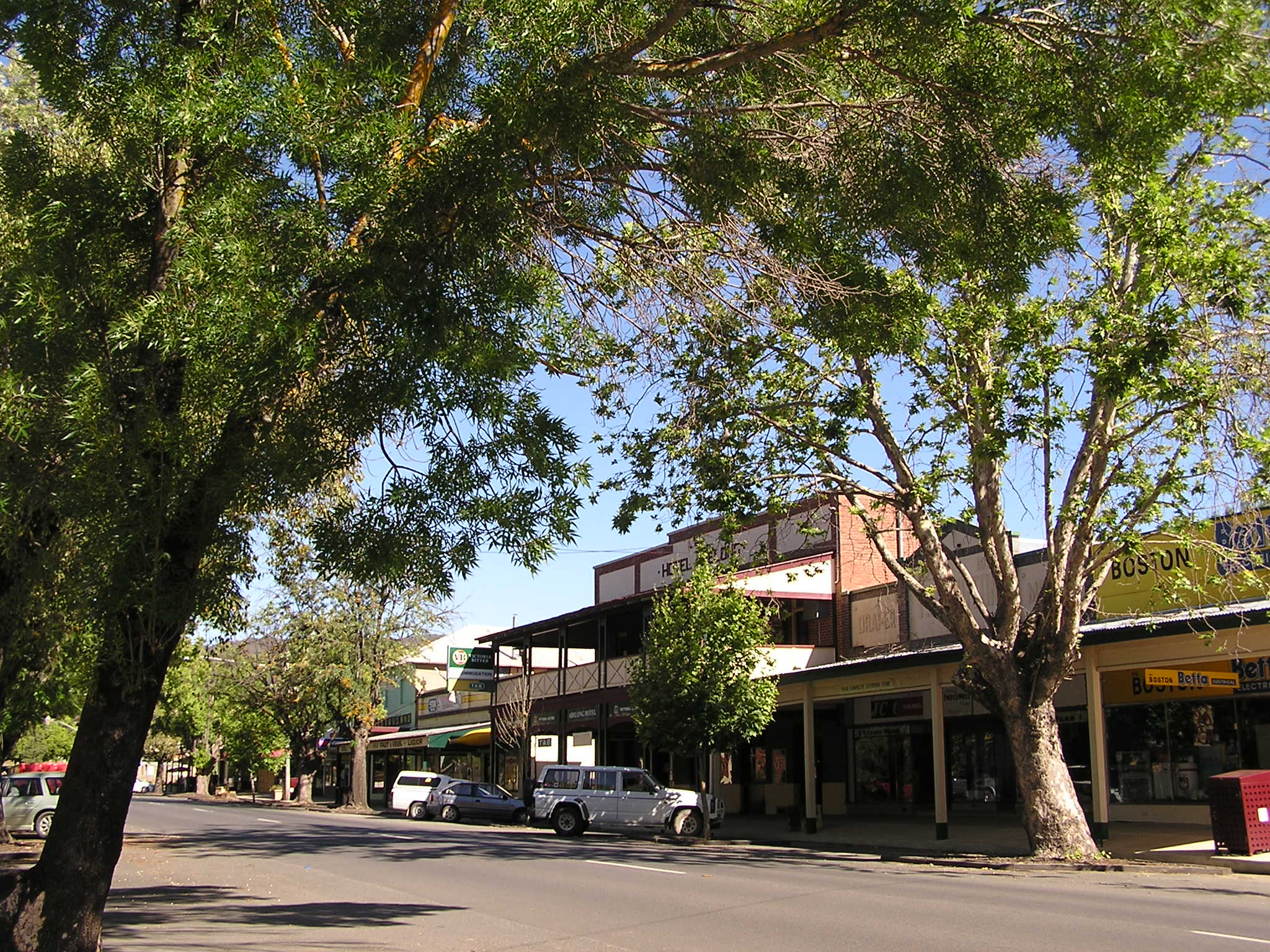- Adelong, New South Wales
Infobox Australian Place | type = town
name = Adelong
state = nsw

caption = Main street
lga = Tumut Shire
postcode = 2729
pop = 829
mean rain days = 99.2
pop_footnotes =
est = 1840
elevation= 303
maxtemp = 21.9
mintemp = 6.7
rainfall = 788.1
shire = Tumut
county = Wynyard
fedgov = Eden-Monaro
stategov =Wagga Wagga
dist1 = 410
location1= Sydney
dist2 = 81
location2= Wagga Wagga
dist3 = 20
location3= Tumut
dist4 = 6
location4= Grahamstown [ [http://www.travelmate.com.au/MapMaker/MapMaker.asp Travelmate] ]Adelong is a small town in the
Riverina region ofNew South Wales ,Australia and is a part of the Tumut Shire. The Adelong district has a population of about 1400, while Adelong itself has a population of 829 people.census 2006 AUS|id=UCL100600|name=Adelong (L) (Urban Centre/Locality)|accessdate=2008-03-31|quick=on]The town is situated about 160 kilometres west of
Canberra . It is on theSnowy Mountains Highway .The town's name is said to be derived from an Aboriginal language meaning "along the way" or "plain with a river". [cite web
title =Adelong
publisher =Geographical Names Board of New South Wales
url =http://www.gnb.nsw.gov.au/name_search/extract?id=JPckFxZT | format =
accessdate =2006-12-31 ]It was settled about 1840 to 1850 because gold was found there.The initial discovery of gold at Adelong by a Mr Williams took place in 1857, the find being located on the crest of Victoria Hill and representing the weathered capping of the Old Hill Reef. Alluvial gold, both in Adelong Creek and Golden Gully is also believed to have been discovered at about the same time, and the field quickly developed into an important producer.
By 1859 a number of prominent lines of mineralisation were being actively exploited. The two most prominent lines of mineralisation, the Old Reef and the Victoria, produced some 3 798 kilograms of gold during the period 1857-1876. During the gold rush the population expanded to more than 30,000 people. Over 25 tonnes of gold was mined from 1857 to the close of the mine in 1914.Adelong's importance in Australia's early mining history has been recognised by the National Trust of Australia with a large section of the main street as well as a number of impressive early buildings being classified.A number of narrow-gauge tramlines were laid throughout the mine area. Adelong is one of the only two gold mining areas in New South Wales known to have employed a steam locomotive on its tramways. ["The Perseverance Gold-mining Company Tramway" Madden, Rod & Longworth, Jim Australian Railway Historical Society Bulletin, February, 1998 pp54-60] The gold ran out in the latter part of the 19th century and the pastoral industry became the principal activity. This was mainly Merino sheep and beef cattle, and continues now. Over the last 20 years a tourist industry has developed because of the pleasant scenery and gold mining history.During the gold rush many Chinese people worked in the mines, a lot of whom died and were buried in a special portion of the Adelong cemetery. Unfortunately the Chinese portion of the cemetery was obliterated in the early nineteen hundreds. One or two elderly Chinese and Indians still lived in Adelong in the 1950's. A community named Cornishtown existed about a mile to the West of Adelong till the 1940's [http://www.historyaustralia.org.au/ifhaa/towns/adelong.htm "Internet Family History Association of Australia" Retrieved on 2008-10-01] . The famous Adelong Falls, with its rich gold-mining past, is an ideal spot to have a leisurely picnic or to explore the unique surrounding area.
Notes
Wikimedia Foundation. 2010.
